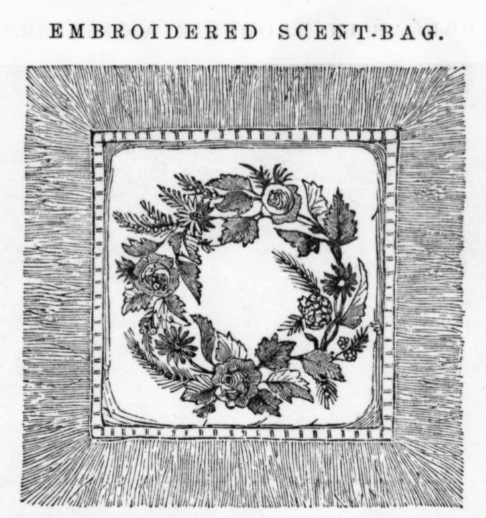History of Lavender Sachets
Who doesn’t like a whiff of a lovely smell in their home or on their clothes? While products like Febreeze and Downy Unstoppables are new, bringing the fresh scents of the outdoor indoors is as old as, well, the indoors itself.
Using dried plants to repel insects and sweeten the air, especially plants like lavender, has been a thing since Ancient Rome (is there anything that doesn’t go back to Ancient Rome?). Lavender, in particular, was used in washing clothes; the Latin verb lavare means “to wash.” Roman writings from 77 CE, De Materia Medica, talk about lavender’s use for medical and antiseptic purposes.
Ancient Romans used lavender to wash, but Chinese people in the Tang, Han, and Song dynasties wore their dried herbs and flowers in pouches to repel insects and mask body odor. In Tudor England, lavender was grown near the wash house so that it was easily to hand for doing laundry. Wet laundry would be laid out in the sun to dry and lavender stalks were placed on top. Of course, only underclothes that were worn next to the body were regularly washed. More elaborate clothes that would be ruined by laundering were hung in closets with sachets of lavender, rosemary, thyme, mint, cloves, and carraway to keep them free from insect activity, as well as smelling fresh.
The Victorians took his centuries old practice and made it extra, as usual. Because nothing was too mundane for extravagant decoration, sachets of this time period (rather tritely referred to as “scent bags”) exploded in variety of decorative techniques. Just because it’s being kept in a locked clothes chest doesn’t mean it can’t be covered in intricate embroidery, beads, lace, and fringe. Of course, working class people made simple muslin bags for this, but the more time, skill, and materials one could expend on such a basic item was a display of wealth and leisure, even if no one but the maker ever saw it.
By the 20th century, the stylish, fragrant young women of the Victorian era had grown into grandmothers and lavender sachets became associated with fussy old ladies. But the efficacy of lavender and other dried herbs for making our clothes and homes more comfortable hasn’t changed even hundreds of years later. We see this in all the home products that are artificially perfumed with these scents.
If you want a more natural alternative to modern chemical based products, making your own sachets or scent bags couldn’t be easier. They range in effort from putting dried herbs in a fabric bag and tying it shut, to knitting, crocheting, weaving, or embroidering a pouch that fits your own needs, aesthetic, and favourite scent blends. For a super simple woven sachet project, check out my pin loom weaving course. It’s a simple project that makes an excellent introduction to weaving, and if you’re coming to weaving from another yarn craft, they’re an excellent stash buster for those small amounts of yarn.
Lavender sachets have been keeping drawers and closets smelling fresh (and repelling moths!) for centuries! With this course, you can learn to make your own lavender sachets using a 4" pin loom. Place them around your house anywhere that needs a fresh scent, or make them to give away! They make great housewarming gifts! This is an excellent course for absolute beginners at pin loom weaving. The project teaches basic techniques and results in a finished project that is useful and quick to make!


